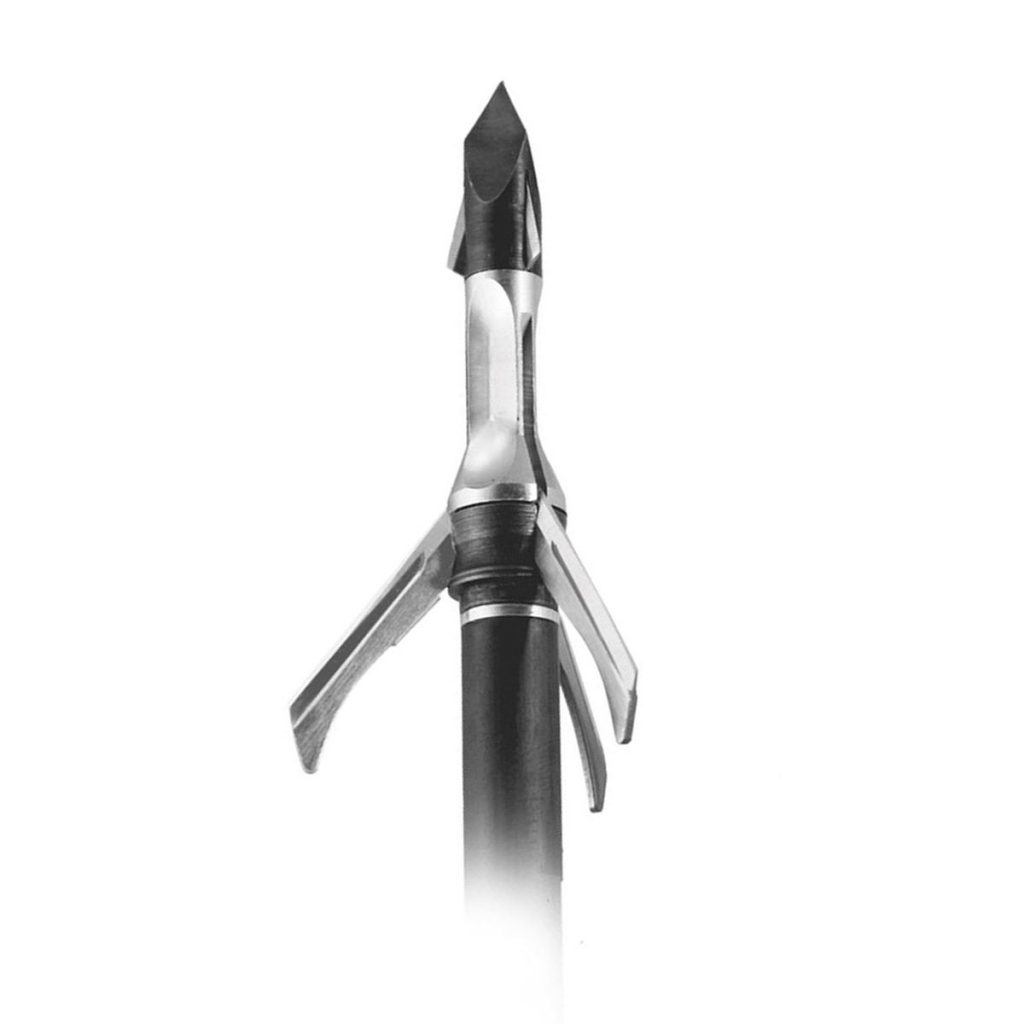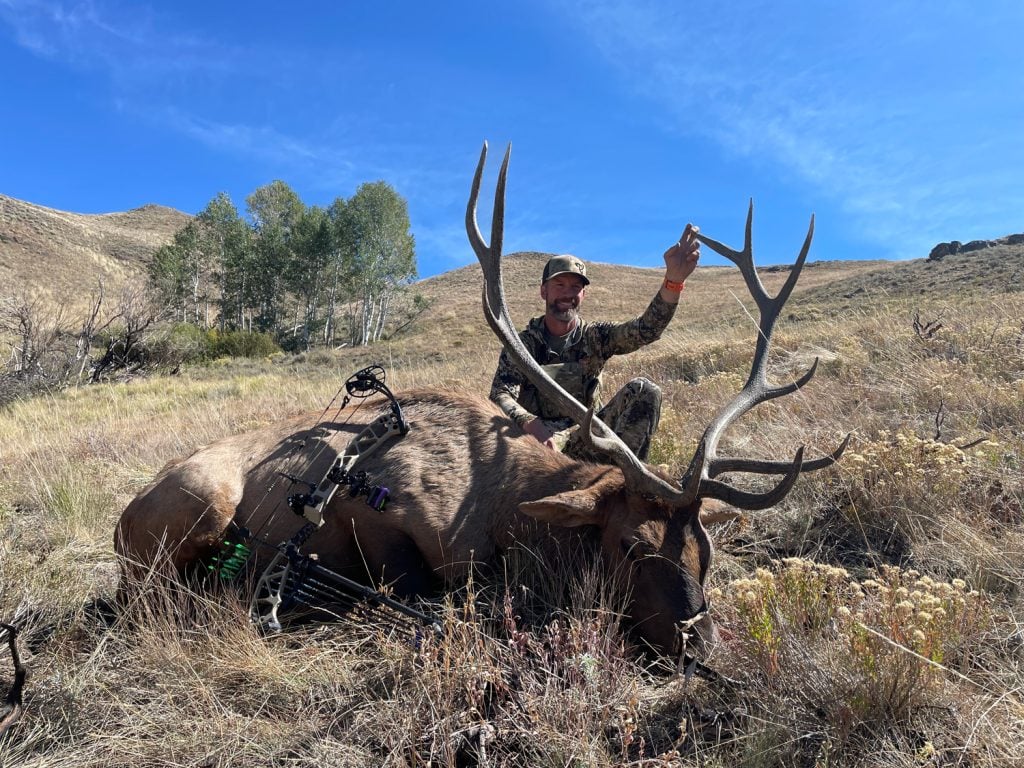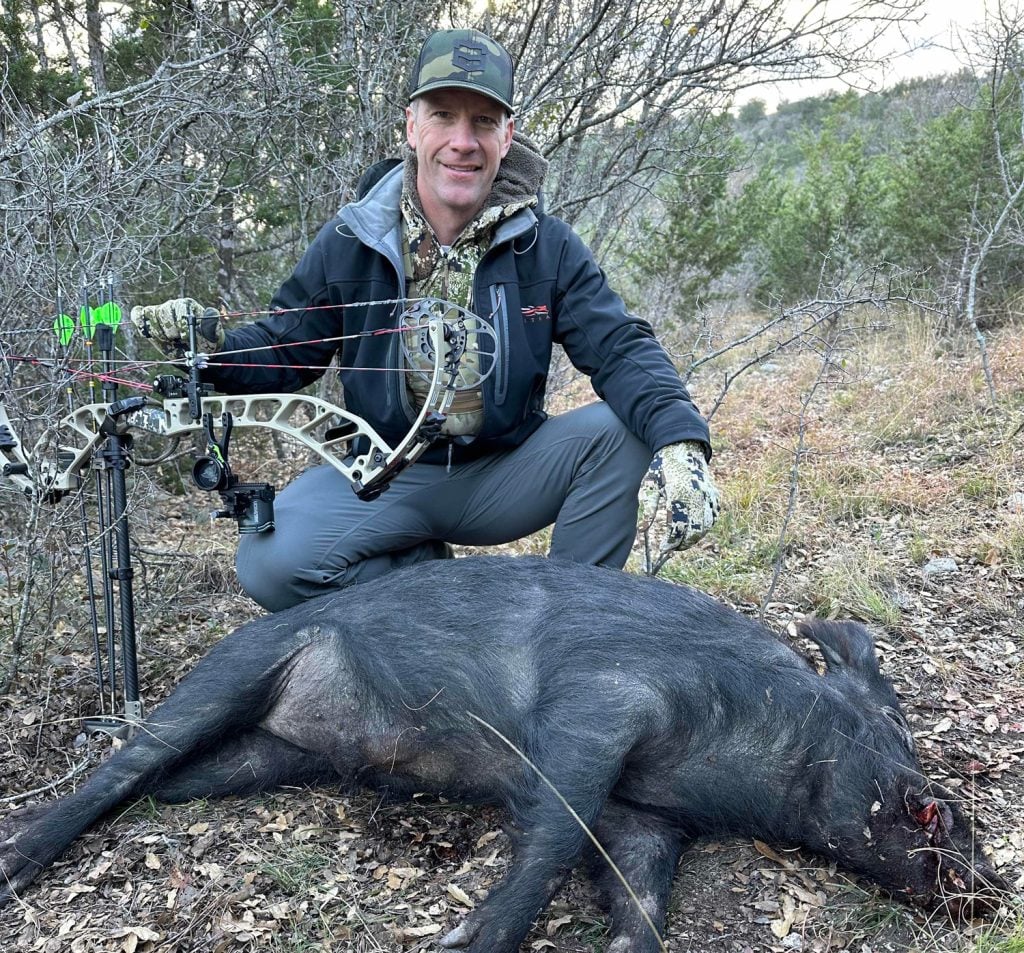Grim Reaper Broadheads – Fixed vs Mechanical

Whether you are brand new to archery or a long-time veteran, you have probably noticed that there are very strong opinions on the topic of broadheads. The big debate and question is should I shoot a fixed blade or mechanical head on the end of my arrow? I don’t know that there is a right or wrong answer to this question because there are pros and cons to both setups. Also, there are many variables that should be considered to help answer this question. I have been a big fan of Grim Reaper Broadheads for many years. The company is a small family-owned business that has been around for 20 years. They have a robust product line and a proven track record of quality. As an added bonus, they are 100% made in the USA which helps them with quality control. Not many other broadhead companies can say that these days.
A good buddy of mine, Matt Bateman, is the sales manager and is an absolute killer with a bow. I have a lot of confidence in a company that has actual hunters involved in their product development and testing. I know there are lots of options to choose from when it comes to broadhead manufacturers, but in this article, I will specifically focus on my experience with Grim Reaper Broadheads and my opinion as to why you would shoot a fixed or mechanical head.
Fixed

Fixed blade heads are just that, FIXED. No moving parts. Typically, this involves a ferrule (usually aluminum or stainless steel) and 3 or 4 razor sharp blades that lock into the ferrule. There are also variations whether the blades are vented or solid as well as the angle and the thickness of the blades. Grim Reaper has two versions of fixed blades heads. The 1 3/16” cut is called the Hades and the 1 1/16” cut is called the Micro Hades. Both have several weight options and come in 3 and 4 blade configurations. Both versions have a very sharp pro-style tip. I have primarily used the Hades Pro fixed blade head 1 3/16” in 125 grains. I can get this larger fixed blade head to fly excellent and have a lot of confidence in the durability and blade sharpness of this head. Having said that, below are some of the pros and cons of fixed blade heads.
Pros
- No moving parts to malfunction
- Durability
- Sharpness
- Better penetration
- Reusable (can swap out blades)
- Accurate (out of a well-tuned bow)
- Usually better for low poundage shooters
Cons
- Bow and arrow tuning is required for best accuracy
- Planning issues in the wind
- Impact point can be different than field points
- Requires proper shooting form even in high stress situations
- Smaller cutting diameter (less damage to tissue)
- Can cut yourself – these are razor blades
Mechanical

Mechanical blade heads typically require some force or surface contact to open the blades. Grim Reaper Mechanical Blades are what are referred to is over the top mechanical broadheads meaning the tip will penetrate into the hide and then milliseconds later the blades deploy with a spring mechanism in the collar of the broadhead. The advantage is the blades remain closed during flight to avoid wind deflection and maintain aerodynamics and then once the target is hit, the blades swing out and are forces into a cut position. My personal favorite mechanical broadhead is the Grim Reaper Pro 1 3/8 3-blade. More about this head later.
Pros
- Larger cutting area (more damage to tissue)
- Better flight generally due to smaller profile and better aerodynamics
- Field point accuracy
- Reusable (can swap out blades)
- More forgiving to improper shooting form
- Safer to handle
Cons
- Durability
- Malfunction – blades don’t deploy or deploy early
- Penetration – requires more energy to deploy blades
Which one to shoot?

I am one of those guys that is always tinkering with my setup and my broadhead preference changes on any given year and species I pursue.
I have been hunting elk in Idaho for the past several seasons and that state, in particular, has had a ban on mechanical heads, so the choice was easy to use fixed blade heads. Not to mention fixed heads perform excellent on dense, tough animals like elk, moose, etc. Idaho has since lifted this ban on mechanical heads. In fact, mechanical heads are now legal in all 50 states. The only restrictions may be imposed by an outfitter that you may be hunting with.

Here are some things to consider when choosing fixed or mechanical. Personally, I can get fixed blade head to fly with my field points because I spend a lot of time on my setup. Meaning I make sure my bow is tuned perfectly and each of my arrows are tuned to my bow. This requires nock tuning, broadhead tuning, etc. It can be an involved process and frustrating at times. Fixed blade heads also require excellent form which can fall apart in the heat of the moment. For example, a small torquing of your grip will cause your fixed blades to impact differently down range. Also consider the environment. It’s not uncommon to have strong or gusty winds in the mountains which has an influence on arrow flight but especially on fixed blades. Typically, fixed blade will have a smaller cutting diameter to make them more arrow dynamic and less susceptible to wind planning. These smaller cut heads can lead to less tissue damage and tougher blood trails. One last thing to consider, but certainly not the least important is shot placement. You need to be able to hit where you are aiming! Easier said than done in a hunting situation. My experience is that mechanical broadhead are more accurate based on design and forgiveness. And if you happen to miss your mark, then having a larger cutting diameter mechanical head will generally create more tissue damage and better blood trails than a smaller fixed blade.
Bottom line for me is I think there is application for both, and it is dependent on your set up and the game you are going after. If I were a low poundage shooter, then I would go with a fixed blade head. If I were going after tough-skinned, dense boned game like elk, moose, buffalo, hogs, I would lean toward a fixed blade. All other species, I would screw on a mechanical.
Finally, to even further complicate the debate, Grim Reaper now makes a hybrid head which has a little bit of the best of both worlds. Part of the broadhead is a fixed blade and part of the broadhead is mechanical. I have been testing these on several animals this past year with fantastic results.
In the Field Application
I recently got back from Texas and had a chance at a 200lb boar hog. These animals are extremely dense and have a thick shield plate that covers their vitals. Not an easy task to penetrate to say the least. I had a shot right before dark at 63 yards. My setup is a PSE Omen set at 67lbs draw weight. I am shooting a 450-grain Victory RIP TKO arrow at 280fps with a 125gr Grim Reaper 1 3/8” 3-blade mechanical. My arrow flew true and stuck the hog mid body. He took off and all I could see was my lighted arrow nock sticking out of him. About 5 seconds later, he was in the brush, and I heard him start kicking. A quick, humane kill on a very tough animal using a mechanical broadhead. Upon further inspection, the arrow penetrated to the off shoulder and the broadhead was in great shape.

Several features I really like about the Grim Reaper 1 3/8” 3-blade head is there are no bands, clips or O rings. The blades stay in place by a spring that is held within the collar. The blades actually snap into place, so you know they are closed. Also, the blade angle is swept back to 40 degrees which allows for better penetration. I was stoked with the results on this big hog.
Be sure and check out the full lineup of Grim Reaper heads at www.blackovis.com.
